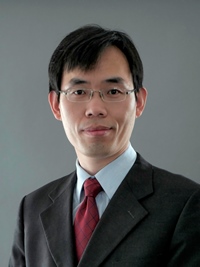Research Interest
1. Porous materials for adsorption and catalysis;
2. Organic-inorganic hybrid membranes for gas separation and sea water desalination;
3. Catalytic membrane reactors.
Research Fields
New materials and new energy
Representative Research
1. CO-free hydrogen production using catalytic membranes
An innovative route was developed by coupling steam methane reforming with H2 removal using a mixed conducting ceramic membrane to coproduce CO-free hydrogen and syngas on opposite sides of the membrane, which can be directly used for fuel cells and Fischer–Tropsch synthesis, respectively (AIChE J. 2019, 65, p. e16740.). For practical application, strontium titanate-based membranes delivering long-term stability at harsh conditions were developed, achieving efficient and stable hydrogen production from water splitting driven by fossil-fuel-derived hydrogen with low purity using the above robust membranes. These highlight the great promise of mixed ionic-electronic conducting ceramic membranes for fossil-fuel-derived hydrogen purification for use in energy applications and related industries (Angew. Chem. Int. Ed. 2021, 60, p. 5204-5208.).
2. Novel composite membranes for gas separation
The development of novel composite membranes for gas separation with high permeance, high selectivity and good stability has attracted significant attention in CO2 capture and H2 purification applications.
Taking advantage of the functionalization and pore structure of nanosized porous materials (including metal organic framework, mesoporous polymer, and zeolite), our research team fabricated novel composite membranes composed of nanosized porous materials and another phase (such as polymer, ionic liquid, and graphene oxide), which showed excellent gas separation performances (such as CO2/N2, CO2/CH4, H2/CO2).
For example, we used porous material as interlayer or additive to regulate the microstructure of polyamide composite membrane via scalable interfacial polymerization process, generating polyamide membranes with a specific nanoscale striped Turing structure and a selective layer thickness of 145 nm, which exhibited a higher CO2/CH4 selectivity of 58 and a CO2 permeance of 27 GPU, showing a promising application in CO2 capture and biogas upgrading (ACS Appl. Mater. Inter., 2021, 13, 15, 18380).
3. Developing photothermal membranes for efficient interfacial solar-driven seawater desalination
Water scarcity is an extensive problem all over the world. Compared with the natural evaporation,interfacial heating by confining photothermal membrane to the air/seawater interface has proposed to increase clean water supply. To develop high-performance photothermal membranes and improve vapor generation efficiency, our group has done a lot of innovative works on micro-structure control, macro-morphology design, energy-saving regeneration, and controllable salt deposition of the photothermal membranes (Nano Energy, 2020, 70, 104538; J. Mater. Chem. A, 2018, 6, 9874-9881; J. Mater. Chem. A, 2018, 6, 963; Mater. Today Energy, 2020, 16, 100391; Adv. Sustainable Syst., 2018, 1800108.).
4. Catalyst development for light alkane conversion
Bifunctional catalyst with zeolite catalyst for alkane dehydrogenation and doped ceria or perovskite as oxygen carrier for selective H2 combustion was developed for the aromatization of light alkanes. In this regard, a highly effective bifunctional catalyst can be developed for light alkane aromatization, and the deep oxidation of hydrocarbons was prevented, further enhancing the aromatics productivity (Chemical Comunications, 2018, 54, 10343).
Contact
jianghq@qibebt.ac.cn





